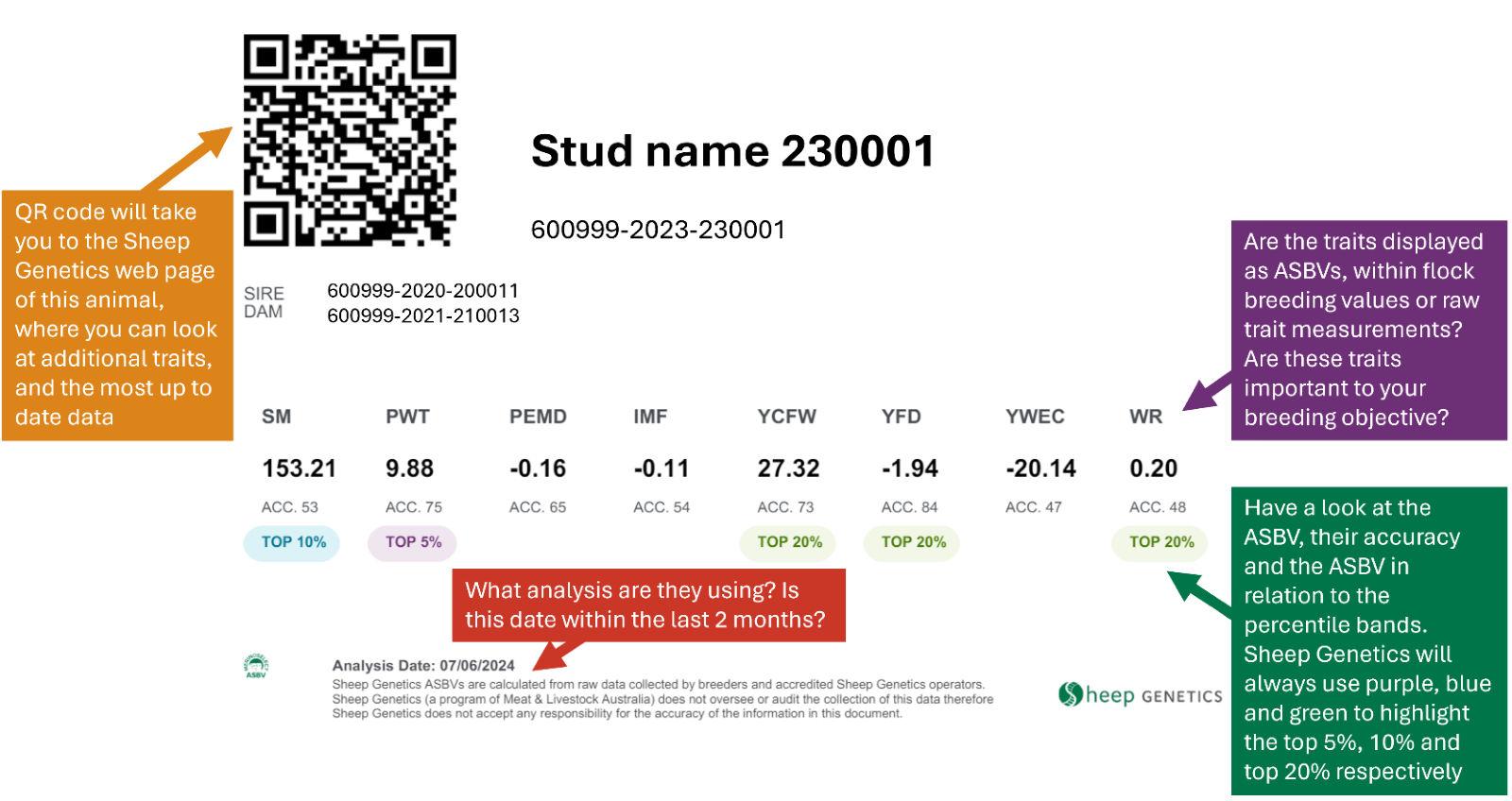A ram buyers guide to sale catalogues and pencards
Things to check before buying a ram using ASBVs
When looking at sale catalogues and/or pencards for animals you’re thinking about purchasing, there are several things to check. Not all sale catalogues and pencards look the same or have the same information listed so it’s important to make sure you’re looking at the most up to date information. The below points will help to ensure you’re making your purchasing decisions using accurate information.
What to look for in a catalogue and pen card:

Remember:
- Within flock breeding values cannot compare animals in different flocks, they only rank animals within a specific flock.
- Look at the range in ASBVs for each trait – is this a large range or small?
- ASBVs should always be looked at in relation to the percentile bands – more info below
Check the Sheep Genetics website for:
- The depth of pedigree for an individual animal
- Multiple levels of known pedigree supplied to the analysis enables more information on relationships between animals
- See what measurements have been taken for an individual animal by scrolling down to the ‘traits observed’ section
- How the animal’s sire and dam have also performed to give you a broader picture
- Whether there is a genotype flag
- A 50K genotype increases the accuracy of ASBVs/indexes
- Whether there is progeny recorded for an animal (and how many flocks the progeny are in)
- The more progeny records available for an animal, the higher the accuracy of ASBVs/indexes
Other important things to consider before making purchasing decisions
Things to ask the stud:
Before sale day, give the stud a call to talk through the following;
- What is their breeding objective – does the seedstock breeders objective align with yours?
- The stud’s Data Quality Score (DQS)
- Studs with a higher DQS on average achieve greater rates of genetic gain
- What traits they are recording and submitting to Sheep Genetics
- For example, are they doing lambing rounds to collect birth site information
- The flocks’ genetic trends for the past 10 years (compared to the average of the breed and analysis)
- How often they are submitting data to Sheep Genetics
- The more frequent a flock is submitting data, there will be less frequent large movements in ASBVs/indexes
- Flock’s health status
Have a breeding objective and track your sire team:
Setting a breeding objective is important to make sure you can measure your success! Having a long-term goal in a breeding business can help you make more informed purchasing decisions. Likewise, tracking your sire team gives an indication of how your flock is performing over time – which helps you identify areas you can improve. Knowing your flocks’ genetics can then help select sires that will help achieve your breeding objective. Sheep Genetics has some tools to help with this click here.
Understanding the percentile bands:
Percentile bands are used within Sheep Genetics to easily and quickly benchmark where an individual animal is sitting for a trait within industry. Percentile are updated with the run results every 2 weeks for the analyses.
More information on how to interpret the percentile bands can be found here.
Visit the MLA Genetics Hub
The MLA genetics hub has handy videos and resources including:
- Understanding ASBVs and indexes
- How to shop for a high performing sire
- Searching for animals on the Sheep Genetics website
- Commercial farmer profiles